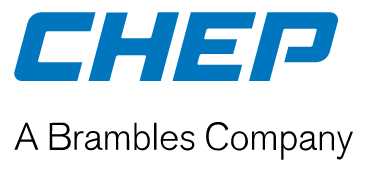Disclosure: Privacy Australia is community-supported. We may earn a commission when you buy a VPN through one of our links. Learn more.
Best High-Dividend Stocks & How to Invest in Them

Stocks that pay out large dividends are seen as a haven by investors looking for stability in the volatile equity market.
A dividend, in its most basic form, is the distribution of a part of a company’s earnings to its shareholders.
Dividends are periodic payments to shareholders as appreciation for their investment in the company’s development and success.
A thorough knowledge of dividends, their advantages, and the dangers connected with large dividend-paying equities is essential to be a savvy investor.
A significant portion of our trading account portfolio returns can come from dividends, which play a crucial role in compounding returns over time.
To help you, the nature of dividends and the top-performing good dividend stocks are examined in depth in this guide.
Table of Contents:
- Pros and Cons of High-Dividend Stocks
- Reviews: 10 Top High-Dividend Stocks in Australia
- 1. Woolworths
- 2. Santos Ltd.
- 3. Brambles (CHEP)
- 4. Transurban
- 5. Sonic Healthcare
- 6. Medibank
- 7. Ampol
- 8. Whitehaven Coal
- 9. Mercury New Zealand
- 10. Elders
- Buying Guide
- Conclusion
- FAQs
Pros and Cons of High-Dividend Stocks ⚖️
If you’re a trader looking to take advantage of high-dividend stocks, this section is worth checking out before settling on a stock.
It’s important to remember, however, that not every business distributes dividends. Profits from certain companies may be reinvested to drive future growth, while the profits of others may be insufficient to support a payout to stockholders.
Pros
- ✔️ First, and perhaps most obviously, investing in the appropriate company may provide you with a steady stream of passive income in the form of dividends while also increasing your wealth over time. These payouts may be taken out as cash or reinvestment in the stock market.
- ✔️ Dividend growth equities have a strong track record, with returns often exceeding those of the larger stock market over the previous two decades. The S&P 500 Dividend Aristocrats Index has outperformed the S&P 500 by almost one percentage point over the previous 19 years. This index includes firms that have increased their dividend for at least 25 consecutive years. The results of the past do not guarantee the outcomes of the future.
- ✔️ Stocks that generate dividends are often portrayed as safer investments during times of market instability. This is due to the fact that dividend-paying corporations have longer histories of success. Again, previous results do not guarantee future results.
- ✔️ The power of compounding: When dividends are reinvested over the long term, the investor may experience a virtuous cycle of growth as they earn dividends on their dividends.
Cons
- ❌ If your dividend income is over a specific threshold, you will owe taxes unless you use a tax shelter. The tax consequences will vary for each person and may be subject to change in the future.
- ❌ Dividends may or may not be paid out. When circumstances are tight, businesses may and often do cease paying them. In 2020, for instance, the Bank of England urged UK banks to save capital by delaying dividend payments.
- ❌ Although dividend stocks have generally done well over the long term, their value may momentarily drop following the ex-dividend date. A portion of the company’s cash reserves will be utilised, so investors will be aware of that. Since new buyers won’t get a dividend payment until the next dividend is declared, the stock may seem less desirable.
How to Avoid Account/Credit Card Fraud ☠️
Reviews: 10 Top High-Dividend Stocks in Australia 📕
Now you understand the pros and cons of low-spread AU forex brokers. If your money is tight, remember that awareness is the most important thing.
Taking all of these factors into account, we settled on five small business loans as the most promising options available right now.
The 10 top Australian forex brokers are listed below. These suggestions are not based on personal experience but rather on research and reputation.
Let’s get started with our top-ten review:
- Woolworths — Our Favourite Aussie High-Dividend Stock
- Santos Ltd. — Top-Performing High-Dividend Stock in Australia
- Brambles (CHEP) — International AU High-Dividend Stock
- Transurban — Possibly Underrated AU High-Dividend Stock
- Sonic Healthcare — Popular High-Dividend Stock for Healthcare
- Medibank — Alternative High-Dividend Stock for Healthcare
- Ampol — Top-Rated High-Dividend Stock for Energy and Transport Logistics
- Whitehaven Coal — Leading AU and Asian High-Dividend Stock
- Mercury New Zealand — Up-and-Coming High-Dividend Stock
- Elders — One of the Most Interesting High-Dividend Stocks for Agriculture
1. Woolworths — Our Favourite Aussie High-Dividend Stock
Active stock selection, in general, seeks to identify firms that provide returns in excess of the market average. In addition, putting money into the correct stocks may significantly increase your net worth.
A stock like Woolworths Group Limited (ASX:WOW) has obviously outperformed the market return of roughly 14% (ignoring dividends) during the previous five years, with a share price increase of 34%.

Even yet, Woolworths is a very successful grocery business across Australia and New Zealand. There are 1,087 Woolworths and Metro Food shops run by the firm in Australia, and another 190 countdown stores in that country. It also has 176 Big W warehouse-style discount shops.
In order to turn a profit at the lower end of the food retail pricing spectrum, it is essential to keep expenses to a minimum. Thus, Woolworths is now midway through a supply chain transformation that has resulted in the addition of seven distribution centres since 2019 and will result in the addition of four additional distribution centres over the following three years.
Sales at Woolworths have increased annually over the previous four years, increasing by 4.0% in the first half of 2023 compared to the first half of 2022 and by 7.5% annually since 1H2020.
But the stock hasn’t done as well in recent years, returning just 13% in the last year (including dividends). The dividend yield of 2.5% isn’t exactly thrilling. The stock has risen by 12% so far this year, but if things keep getting better and investors keep rebalancing their portfolios, that number might rise much higher.
The 13% overall shareholder return over the last year for Woolworths Group stockholders is encouraging. The dividend is a part of it, of course. That increase exceeds the yearly TSR during the previous five years by a significant margin, 13%. As a result, it seems that recent public opinion of the corporation has been mostly favourable.
Considering the stock’s continued upward trajectory, it might be wise to take a closer look at it to ensure you don’t miss out on any potential gains. Looking at share price as a long-term indicator of company success is fascinating to me. However, we need to take into account additional data if we are to get true understanding. Try new things, but be careful of the one red flag the Woolworths Group has identified.
2. Santos Ltd. — Top-Performing High-Dividend Stock in Australia
Listed on the Australian Stock Exchange (ASX), Santos Limited (STO) is a global low-cost oil and gas producer with operations in Australia, Papua New Guinea, Timor-Leste, and the United States.
For more than half a century, Santos has been the primary energy provider for the Australian and Asian markets.

Santos has oil development assets in Alaska in addition to its exploration, development, production, and transportation of natural gas and liquids in Australia, Papua New Guinea, and Timor.
Natural gas and natural gas liquids make over 88% of Santos’ reserves, making the company a natural gas play. About a quarter of its reserves are located on Australian soil, where the price of natural gas is rather high. The remaining reserves will be exported as LNG from offshore regions of Australia and Papua New Guinea. Since the explosion of the Russian-German Nord Stream pipelines, the price of LNG has remained high.
After reporting a more than doubling of profit on bolstered LNG portfolio after its merger with Oil Search and increasing oil and gas prices, Santos Ltd (STO.AX) recently increased its final dividend by more than 77%, sending its shares up by over 4%.
In 2022, earnings for energy companies throughout the world skyrocketed due to increased LNG prices as a result of European restrictions on Russian energy exports. When Adelaide-based gas firm Santos merged with Oil Search in late 2021, it boosted its LNG position in Papua New Guinea, which led to a 12% rise in yearly production and a 68% increase in the average realised price of LNG to $15.5 per million British thermal units.
3. Brambles (CHEP) — International AU High-Dividend Stock
Known more commonly as CHEP, the owner of the ubiquitous blue pallets, Brambles Limited (ASX:BXB) has a long history of dividend payments to its stockholders.
Brambles, which started out as a pallet manufacturer, now manages pallets, crates, and containers as part of its supply chain logistics operations.

CHEP operates throughout North and South America, the Middle East, Africa, and India, and CHEP runs in Australia for Brambles. Pallet, crate, and container management is still important even in a down economy. Brambles increased annual sales from $4.6 billion in 2019 to $5.6 billion in 2022, despite the pandemic’s impact on the company’s supply chain.
Despite predicting that timber prices and supply chain challenges would last until at least the second part of the next fiscal year, Brambles Ltd. increased its dividend and full-year projection in 2022.
Friday, the U.S. dollar-reporting ASX-listed pallet supplier announced an underlying profit of $481.2 million for the six months through December, up from A$465.0 million in the same period a year earlier.
The firm saw an increase in revenue of 8% to $2.77 billion, but it increased its net cash outflow projection for the whole 2022 fiscal year from $200 million to $350 million owing to rising timber prices and supply chain interruptions caused by labour and transport constraints.
4. Transurban — Possibly Underrated AU High-Dividend Stock
Transurban operates as a holding company and developer of toll roads. Across Sydney, Melbourne, Brisbane, the DC Metro Area, and Montreal, it manages a total of 21 toll highways. Toll roads are a dull industry that brings in consistent income year after year.
However, Transurban distinguishes out since it is not only immune to inflation but seeks to gain from it.

Sixty-eight per cent of Transurban’s income was linked with CPI as of 31 December 2022, while another 27 per cent was automatically increased by 4.24%. Housing, entertainment, food, and home goods are major contributors to inflation, yet they have little effect on Transurban’s expenses.
FOR SYDNEY — Transurban Group increased its annual distribution projection in the second quarter of 2023, citing optimism for a rebound in traffic on its worldwide network of toll roads after the pandemic and better-than-anticipated results on financing costs. Transurban said that its dividend forecast for the year ending in June has increased to 58 Australian cents (38.7 U.S. cents), a jump of over 42% from the 2022 fiscal year. The business had projected a dividend payout per security each year of A$0.57.
5. Sonic Healthcare — Popular High-Dividend Stock for Healthcare
Sonic Healthcare is another dividend stock on the ASX to consider. Healthcare providers in Australia, New Zealand, the United Kingdom, Europe, and the United States may use Sonic Healthcare’s diagnostic services.
Primary medical care services account for 5% of the company’s income. The firm is a global market leader in the field of medical diagnostics.

Sonic has been providing high-quality pathology, diagnostic imaging, and general care for 30 years and counting. This applies to all of our activities, wherever they may be based, whether it ANZ, Europe, or North America. However, leadership never rests on its laurels. It made a big purchase announcement lately, and Citi analysts liked it. A broker remarked:
Diagnosticum is a collection of 15 laboratories and 25 pathologists in southeast Germany, and SHL has just announced a formal deal to buy them. With this purchase, SHL will pay €190m (debt-free) or A$310m. Company strategy has always included making acquisitions (more than 40 since FY07), therefore this deal makes sense. Even with SHL at the top, the top five companies in Germany only account for 40-50% of the market share, according to SHL. Our evaluation of SHL is Buy.
The broker expects dividends to increase to 112 cents per share in FY 2024 from 104 cents in FY 2023. At the current price of $35.34 per share, this equates to a 2.95 percent and 3.2 percent yield for Sonic investors. Sonic’s diagnostic business benefited from the extensive testing done for Covid, but the firm also saw a 9 percent increase in its non-Covid business during the first half of 2023.
In a period when the economy is showing signs of a slowdown, a steady increase is a desirable quality. People are ill in all economies, therefore a medical diagnostics business should be rather recession-proof. Shares of Citigroup were recently recommended with a buy rating and a $40.00 price target.
6. Medibank — Alternative High-Dividend Stock for Healthcare
Medibank is the most popular private health insurance provider in Australia. Privately held Medibank Ltd. markets and sells private health insurance under the Medibank and Ahm brands. Health Insurance and Medibank Health are its two main divisions.
The Health Insurance division provides individual and bundled options for private health insurance, such as hospital and supplementary coverage.

In Australia, Medibank’s Health division provides a variety of telehealth and health management services via contracts with government and business clients. The company’s origin date stretches back to 1976 and its headquarters can be situated in Docklands, Australia.
Private health insurance in Australia provides speedier access to specialists and non-emergency medical treatments, whereas the government-run Medicare programme provides free basic services but frequently substantial wait periods for non-emergency surgeries.
From its inception in 1975 until its privatisation in 2014 at a share price of $2.15, Medibank Private was wholly owned by the government. It hasn’t done very well, as its value of $3.28 after nine years indicates. Medibank, however, has the makings of a good defensive company moving into a slowing economy: reliable earnings and dividend payments and some insulation from the effects of falling consumer spending.
On May 24th, Kieran Chidgey from Jarden reiterated a Buy rating and A$3.80 price target on shares of Medibank Private Ltd. (MDBPF — Research Report). Thursday’s closing price for business stock was $1.93.
Chidgey has a 3-star rating on TipRanks, meaning he has a 55.77% success rate and an average return of 3.4%. The stocks of companies like Computershare Limited, AMP Limited, and ASX Limited are among those that Chidgey follows in the Financial sector.
UBS analyst Scott Russell gave a Buy recommendation on Medibank Private Ltd. today, joining the ranks of Jarden. Hold was Citi’s rating on Medibank Private Ltd. (Other OTC: MDBPF) as recently as May 25.
7. Ampol — Top-Rated High-Dividend Stock for Energy and Transport Logistics
Ampol is an Australian and New Zealand company that handles the import, refining, and distribution of petroleum products. The Australian federal government, worried about energy security, has subsidised Ampol, the operator of one of the country’s two surviving refineries (down from 20 in 2000).
And it seems like there will be less domestic rivalry after 2020, when ExxonMobil’s Altona Refinery closes, and 2021, when BP’s Kwinana Oil Refinery shuts down.

The second quarter 2022 saw a new high for Ampol’s refining profits of USD33 per barrel, up almost fivefold from the previous year.
Since diesel fuel accounts for more than half of Ampol’s volume of sales, and since diesel fuel sales set a record 2.8 billion litres in November 2022, the company’s future seems bright. Ampol’s forward yield is a healthy 7.1%, and if the firm continues to have healthy margins, it may be able to keep or possibly raise its dividend in the future.
After a record year of profit in 2022 because to surging prices of refined products that allowed the company to announce a bumper dividend, Australia’s Ampol Ltd (ALD.AX) recently stated it was well-positioned to handle prolonged volatility in oil markets and was off to a good start in 2023.
Top gasoline supplier Ampol reported healthy markets for refined products in January, with fuel volumes and convenience store sales in Australia rising from December’s COVID lows.
A Refintiv forecast of A$728.9 million was surpassed. The company has also increased its final regular dividend from 41 AU cents per share to 105 AU cents. A special dividend of 50 Australian cents per share was also announced. Stronger pricing for refined goods have helped Ampol and its smaller partner Viva Energy (VEA.AX) — owners of Australia’s two refineries — thanks to rising demand in the wake of a revival in air travel and constrained Chinese production.
8. Whitehaven Coal — Leading AU and Asian High-Dividend Stock
Coal from four of Whitehaven’s mines in New South Wales and Queensland is sent to Asian nations. Both high-value metallurgical coal (used in the production of steel) and cheaper thermal coal (used to produce power) are shipped out of Whitehaven.

The price of thermal coal has been the focus of attention for the last year and may continue to be so for the foreseeable future.
There has been much discussion about shutting down western coal-fired power plants. Unfortunately, nobody told China. According to E3G, China will install another 260 GW of coal-fired power facilities by 2030. Australia, on the other hand, has a paltry 24.7 GW of coal-fired power capacity.
Whitehaven’s high dividend yield of 9.9% in Q1 2023 might be sustained or increased if the company continues to see robust profits on the back of persistent demand. Whitehaven has been quite successful for ASX investors seeking passive income. The company’s record-breaking final dividend and record-breaking interim dividend were distributed to investors.
On September 16th, Whitehaven shareholders received their last dividend payment of 40 cents per share. On March 10th, shareholders’ accounts were credited with the 32-cent interim dividend. Over the last year, the coal company distributed 72 cents per share in dividends. The yield on investment is 10.7 percent at the current share price. A $1,000 investment might provide $107 in yearly passive income after taxes.
Not many shareholders would be unhappy with such a dividend rate.
9. Mercury New Zealand — Up-and-Coming High-Dividend Stock
New Zealand’s electrical needs are met by Mercury’s network of ten power plants: nine hydroelectric, five wind, and five geothermal.
New Zealand hopes to reduce its use on fossil fuels including coal and natural gas. New Zealand has taken action to reduce carbon emissions by instituting a market system based on transferable carbon credits.

The government gradually raises the price of purchasing carbon credits, making it more financially advantageous to implement emission reduction measures. The price of power may rise as a result, and coal and natural gas may be phased out.
This bright forecast seems to account for the low dividend yield of 3.1%. But the New Zealand government may not let Mercury fully benefit from the increasing cost of power.
10. Elders — One of the Most Interesting High-Dividend Stocks for Agriculture
Farms may rely on Elders for a wide variety of agricultural inputs, such as seeds, fertilisers, chemicals, animal health products, and agricultural services.
Corn, wheat, and cattle are all much more expensive than they would have been without the conflict in Ukraine. With this, Elders should be able to keep expanding.

Over the previous 30 months, the firm has boosted dividends every six months and revenues every six months. In 2019, Elders began a pattern of increasing dividend payments every six months, and the company paid out 50 cents per share last year. Elders’ yield was 6.1% as of March 8th, when the stock was trading.
After some news outlets revealed a 46% drop in first-half earnings, the market has been pricing Elders shares down.
Its profits took a hit as the agricultural sector softened after a good showing in the previous month. Investors who rely on passive income may suddenly experience the effects. This morning, the business announced a 30% franked interim dividend of 23 cents per share.
That pales in comparison to the distributions it made in the previous fiscal year. However, it is 15% more than the interim offering of 20 cents a share in the fiscal year 2021, which was also 20% franked. Next Tuesday, shares of Elders will trade ex-dividend. Those interested in investing in the firm have one week to do so before they lose out on the reward.
For its interim offering, Elders will manage a dividend reinvestment plan (DRP). However, the submitted shares will not be discounted in any way. The deadline for registering to receive a dividend in the form of shares rather than cash is May 26.
10 Best High-Dividend Stocks and How to Invest in Them in Australia 📕: 2024 Buying Guide
To start off, let’s begin with an explanation of what dividend stocks are.
Stock dividends are distributions made to shareholders in the form of newly issued shares rather than cash.
Distributions are made as a percentage of the current share value. If a corporation distributes a 5% stock dividend, for instance, the shareholder will get 0.05 new shares for every 100 already held. One hundred shareholders would be awarded five more shares.
📖 Stock Dividends: How They Work
When a corporation wishes to reward its investors but doesn’t have the cash on hand or would rather save it for other purposes, it may pay out a stock dividend, also known as a scrip dividend. In contrast to a cash dividend, which would reduce the company’s cash reserves, a stock dividend would go directly to the shareholders.
Investors might enjoy tax benefits from stock dividends. Dividends received on stocks are not taxable to the investor until the shares are sold.
When receiving a stock dividend, there may be a holding period during which the shares can’t be sold. A stock dividend’s required holding period normally starts on the day after it is received.
Which Yield Rate Should I Pick? 💵 💳
In Australia, which stocks provide the highest dividend yields?
✔️ Investors in Australia looking for dividend companies should focus on indicators of future profits. One important factor is the track record of the business, with dividends being more reliable in established fields such as mining and energy.
✔️ Dividend yield (the yearly dividend divided by the stock price) is a useful metric for making comparisons, but investors should be wary of stocks with yields that are too high to be maintained. Focus on businesses that have shown long-term dividend growth, an indication of management’s conviction and dedication to their shareholders.
✔️ Dividend payments’ long-term viability may be gauged by looking at the payout ratio; a lower ratio indicates greater opportunity for dividend maintenance or growth. Increased ratios point to wasteful spending that might impede development and security.
✔️ Finally, a company’s potential to continue dividends is best gauged by its financial health, which includes a robust balance sheet and low debt-to-equity ratio.
Which is better, dividend stocks or funds?
The ability to invest in individual dividend equities gives investors more control over their dividend income stream. By using this method, attention may be directed towards companies with a proven track record, healthy finances, and promising future. However, picking and maintaining individual stocks takes time and knowledge of stock analysis and the market.
Dividend funds, which may be either exchange-traded funds (ETFs) or managed funds, provide investors a diversified investment vehicle consisting of a collection of dividend-paying equities. These funds provide a number of advantages, including quick diversification, expert management, and lower risk. However, they often include additional costs that reduce returns.
Investors’ preferences, risk tolerance, and investing objectives should all be considered when deciding between dividend stocks and funds. Individual dividend equities may be preferable for investors with the expertise and time for research, while dividend funds may be preferable for those preferring a hands-off strategy or emphasising diversity.
When investors have a firm grasp of the differences between the two strategies, they are better equipped to make judgements that serve their long-term financial goals.
Strategies for Buying Dividend-Paying Stocks 🗺️
Using an honest and open broker to make a successful investment in high-dividend companies is not easy and requires investors to do a several things.
✔️ Consider the dividend yield, the growth history, and the payout ratio to get a sense of a company’s financial health and stability. In this way, reliable dividend-paying firms may be identified.
✔️ The next step in building a successful investing portfolio is to spread your money out over a variety of markets and companies. This safeguards your funds and boosts the likelihood of a steady revenue stream over the long run.
✔️ Finally, it is important to keep an eye on your portfolio and make adjustments as needed to ensure that you are well-informed about the businesses in which you have invested. Rebalancing for diversification’s sake or to get rid of stocks that aren’t doing well might be part of the monitoring and adjusting process.
A high-dividend stock portfolio that is well-researched, diversified, and actively managed can be constructed by following these guidelines. It’s important to tailor your investing approach to your risk tolerance, time horizon, and financial objectives.
Conclusion
🚨 Warning: Why Dividend Stocks Aren’t Always a Good Investment
Investors should be mindful of the hazards associated with dividend equities despite the fact that they might provide appealing investing possibilities. While high dividend rates may at first glance seem tempting, they might really be an indicator of financial difficulty or a failing firm. Before putting money into a firm, investors should check its financial stability and health.
Another issue of concern is whether or not dividends can be maintained in the face of mounting financial pressures that may push corporations to reduce or cancel payouts altogether. Keeping an eye on payout ratios is a good way to gauge whether or not payments will be sustainable in the future. Investors should also stay away from having too much of their portfolio invested in dividend equities, which may make them vulnerable to market and industry fluctuations. A diversified portfolio is more likely to achieve long-term success.
Lastly, dividend investing may not be a good fit for the objectives and risk tolerance of certain investors. Investors with a higher risk tolerance or a shorter time horizon should look elsewhere. Investors may get closer to their financial objectives if they recognise the risks associated with dividend investing and use a diversified, evidence-based strategy.
It’s important to remember that when you invest, you might lose part or perhaps all of the money you put in. This post is not meant as a recommendation of any asset class, investing strategy, or product, and past performance is not indicative of future results.
FAQs
How often are dividends distributed?
Dividends for stockholders in Australia are normally dispersed twice yearly (semiannually) or once yearly (annually). However, the dividend distribution schedule is flexible and dependent on the dividend policy of the issuing corporation.
Dividends are typically paid quarterly, however there are a small number of corporations who pay them monthly. If you want to know exactly when and how frequently dividends will be paid on a stock you own, you should study the company’s dividend distribution schedule.
Where do dividends often go?
Dividends are a common way for companies to return some of their earnings to their shareholders in Australia. The following stages constitute the standard procedure for dividend distribution:
- ✔️ The board of directors of a corporation will announce a dividend, outlining the dividend amount per share and the dividend record date.
- ✔️ The stockholders who meet the criteria as of the Record Date will be those who will receive the dividend. In most cases, you need to be the owner of the shares on the ex-dividend date, which occurs one or two working days before the record date, in order to receive the dividend.
- ✔️ The day on which the dividend is actually paid out to shareholders. Depending on the company’s policies and the wishes of its shareholders, dividends may be distributed in a number of ways:
- The dividend is placed into the shareholder’s bank or broker account by direct deposit. a. In Australia, this is a frequent way to collect dividends.
- Dividend Reinvestment Plan (DRIP): A DRIP is a programme under which dividends can be reinvested by shareholders to buy more stock in the issuing firm. Over time, this may be a useful strategy for increasing the value of your initial investment.
- Dividends are sometimes paid by check, however this practise is fading out of use.
It’s worth noting that dividends paid by Australian firms may be either franked or unfranked. To compensate shareholders for taxes previously paid by the corporation, franked dividends include franking credits. Investors may deduct the value of these credits from their taxable income. The shareholder’s marginal tax rate applies to dividends that are not franked.
Should dividends be your primary priority if you’re an investor?
Stocks that generate dividends might be attractive to retirees and people with a reduced risk tolerance since they can provide a stable income and diversity. However, before concentrating on dividends, you should think about your financial objectives, risk tolerance, and investing plan.
Keep in mind the dividend tax consequences and the dividend reinvestment plan’s (DRIP) long-term growth potential. Avoid limiting yourself to dividend stocks at the expense of growth by considering the overall return (dividends plus capital appreciation) when assessing investments. High dividend yields may be an indication of financial trouble or a lack of reinvestment, so it’s important to evaluate these factors as well as the company’s growth possibilities.
Whether or whether dividends should be a priority for you depends on your specific circumstances and goals. Consult a financial counsellor and have a balanced portfolio that helps you reach your objectives.
You Might Also Like:




